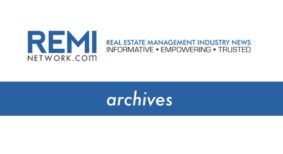Green standards among commercial real estate developers have become more widely accepted. Sustainable buildings not only attract high-quality tenants, but enhance the productivity and wellbeing of a tenant’s employees.
While benchmarks such as LEED are provable targets, net-zero buildings—buildings that produce the same amount of energy as they consume in a year—have yet to gain momentum in the industry, mainly due to their perceived cost.
Here, Albert Bicol, principal at Alberto Bicol Consulting, explains the concept of net-zero and some challenges in creating these buildings.
What do net-zero buildings include and are they difficult to achieve?
Net-zero buildings include concepts and systems, such as passive building architecture (reduce demand), highly efficient engineering systems (reduce demand and increase efficiency) and renewable energy source(s) to offset any carbon-based grid energy they use throughout the year. Based on my experience, passive building architecture and highly efficient engineering systems are quite manageable, but the main challenge is to achieve them while reducing the overall cost so the project can afford the expensive renewable energy source(s). I feel the main challenge in a net-zero building is in the economics.
Based on 20+ years of designing high performance and net-zero buildings, the white elephant in the room is money or economics or finance. The main challenge is not in the design but in the execution and, more importantly, innovative business cases or financing. I have not met too many developers or building owners that will go out of their way for the environment if it is not profitable or if they have to pay a premium.
Are there any differences between new and existing buildings?
There are plenty of differences and the challenges are quite different. I would have to say that existing buildings are more difficult because of the way traditional buildings are designed and built. Therefore, it is better to start over again.
What should be executed in the development phase before the property is built?
Technically, fully understanding the microclimate of the site and where the building will be situated. Understanding the microclimate allows the designers to turn challenges of the climate and site into opportunities or provide a means of overcoming these challenges. The microclimate can also dictate the renewable energy source(s). In other words, work with mother nature.
Financially, the team should get an understanding of available funding or innovative financial or investment companies the owner or developer can partner up with. There are utility companies out there who will “purchase” the building’s heating and cooling system and other energy systems within a building. I own another company called iSmart and we provide, design, construct, operate, maintain and own the energy systems of the building. Our goal is to provide a net-zero building at or below the client’s budget for a traditional building.
How much does net zero enhance a building’s brand?
Net-zero buildings are highly marketable because public demand (pulling) is continually increasing for these types of buildings and their features. Also, certain legislations (pushing) are frequently raising the bar, requiring high performance buildings and eventually net-zero buildings. When developed correctly, these buildings also boost thermal comfort, high indoor air quality and daylighting. In most instances, they are naturally ventilated with a very low or no carbon footprint.
Where do you see the market headed?
I see the market heading towards more innovative financing relationships with developers or developers will be more innovative in their financing. This is where iSmart is positioned. We not only provide design, construction, operations, maintenance and utility services, but we become a partner with the developer or owner. We take on part of the financial and execution risks.
Albert Bicol, P. Eng, LEED AP, is principal at Alberto Bicol Consulting in Vancouver B.C. He has extensive expertise in sustainable master planning, high performance and net-zero buildings. Before forming Alberto Bicol Consulting Inc., he was a partner at Cobalt Engineering/Integral Group for nine years. While there, he spearheaded Cobalt’s leading edge sustainable projects including several net-zero buildings and campus/community plans. Albert was named as one of Building, Design and Construction’s 2007 ‘Top 40 Under 40.’






